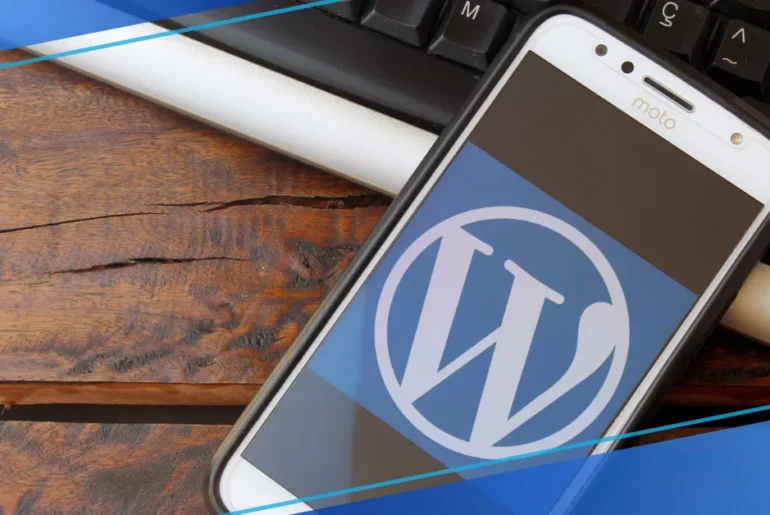WordPress.org, launched in 2003, is an open-source software that was initially famous for publishing blogs and content-heavy formats. However, WordPress became the go-to platform for creating websites, blogs, e-commerce stores, and portfolios with time.
WordPress is such a dependable name in website and blog creation that 38% of all websites on the Internet are built on it. Creators and entrepreneurs use the platform to showcase their art and products, write about their interests and passions, and detail their businesses and journeys.
However, you can do so much more with your WordPress blog – be it a passion project, a product-focused journey, or an appeal for a donation. Read below to find out more!
Table of Contents
The basics of a good WordPress blog
A blog is an online discussion and informational website or an online journal, where content pieces are displayed in reverse chronological order. When people visualize a blog, they generally see long-form content written by a person who has some expertise or interest in the topic being discussed.
The blog topic
If you are someone who operates or wants to operate a blog, there are three factors that you should consider when choosing your blog topic.
- Interest and passion
This is possibly the guiding light for your blog content. It is unlikely that you will be able to write engaging content for a topic you don’t find interesting yourself. When you blog about a passion project, it also helps you position yourself as an opinion leader.
- Qualification and expertise
It is an added advantage to blog about topics you have expertise or experience in. For example, if you work out regularly, it makes sense to blog about exercise regimes and fitness.
[bctt tweet=”For technical topics – like quantum physics or financial investments – readers generally look at the blogger’s credentials. So, it helps to have the necessary educational background or skills when talking about such themes.” username=”Razorpay”]
- Longevity of content
This means that your chosen topic should have a reasonably long term range. If a topic is short-lived, like a fad or current market trend, chances are you might run out of content after a point. It is better to pick up broad themes that give you a vast range of topics to blog about. For example, if you are an expert at cake decorations, pick up baking as your blog theme, so you can diversify your content in the future if needed.
The blog content
After selecting a topic, you need to decide what format of content you want to go for. Usually, this part is flexible because blogging doesn’t require you to adhere to one kind of content format strictly. However, having some form of uniformity and coherency makes the blog more engaging and understandable.
There are multiple formats of content bloggers use. Some of the more noteworthy ones are:
How-to guides
Bloggers, who are experts in a field, generally used this format. This typically includes professionals like doctors, engineers, coders, designers, SEO experts, etc. They detail step-by-step processes, tips, and hacks related to their blog topic or profession.
Experience pieces
This format is suitable for those who may not be experts per se but have relevant experience with the topic. Experience pieces detail a blogger’s journey, mistakes, and learnings relating to the blog theme. This is usually seen in blogs for mommies, new parents, and dieters.
Passion projects
As the name suggests, passion projects stem from a blogger’s deep interest in a particular topic or area of study. These blogs usually don’t follow a fixed format. For example, writers use WordPress to publish their works, which might be poetry, prose, photography, or quotations.
Product-based blogs
Small brands often use blogs to talk about their product range, the brand journey, specialties, and competitive edge. If you are an entrepreneur or a small brand looking to engage consumers, this format can work well for you.
Commentary and opinion pieces
These blogs are written by opinion leaders and industry stalwarts on upcoming trends or events worldwide. The articles generally detail their thought process and opinions and are cherished by readers looking for an expert viewpoint.
Visual medium
WordPress blogs are also adept for posting visual-centric content like videos or photo galleries. Though WordPress is known for its content-heavy format, the visual medium is also gaining popularity on the platform.
Can you make money from a WordPress blog?
In a word, yes.
There are many hacks and short-term strategies available on the internet that guide you to earn money via WordPress blogs. But if you are looking for a more stable and steady flow of income via your blog, you need to look at it as a business opportunity.
There are three ways by which you can turn your regular blog into a space for online business.
Sell digital products with WordPress
Let’s suppose you have a passion project blog on designing. You use your WordPress blog to regularly publish your new designs, digital portraits, and tutorial videos on designing efficiently. Let’s call this blog, Design Diva.
You might slowly realize that your digital portraits are catching the attention of many visitors. You can use your existing Design Diva space to accept orders for customized paintings and start monetizing your passion project.
Many digital products can be sold via WordPress blogs while continuing your passion project on the side. Some of these include:
- Digital art
- Photography
- T-shirt designs
- Ebooks
- Online course materials
- Self-help guides
Sell services online using WordPress
Many freelancers use their blogs to build a portfolio while sharing their skills with the rest of the world.
[bctt tweet=”What starts as a blog for personal expression can turn into a lucrative sales pitch. A WordPress blog is the perfect place to sell services online.” username=”Razorpay”]
As discussed above, the process is the same. You can put your previous works, sample documents, and personal insights on the blog. Visitors can see and review your work and decide to buy it. Some of the often-used services which can be sold via the medium of a blog include:
- Content writing
- One-on-one consultation sessions
- Expert advice as a coach
- Freelance services
- Newsletters
- Stand-up comedy bookings
Raise funds with WordPress
WordPress blogs are often used by individuals and organizations to cover a cause that they dearly support. The blog is a great way to showcase the story behind their initiatives, raise awareness, and update any new developments.
If you religiously write about a social or personal cause, your blog can be an excellent platform to invite donations. This is because good content can instantly compel donors to extend their support.
You can use blogs to invite donations for many causes, including but not limited to:
- Raising money for medical/educational help
- Donations for social issues like women empowerment
- Inviting monetary help to support a personal project or goal
- Crowdfunding for specific events like a rally or a protest
How do I accept payments in WordPress?
Starting an online business via a WordPress blog is easy and relatively inexpensive. But setting up a payment system on the blog isn’t always that simple. Many WordPress blog owners try getting a payment system encoded in their blog, which takes a lot of coding knowledge, effort, and money.
Since technical and backend knowledge is the strong suit of developers, you might have to hire an external party to do this integration. Some people try to go for a payment gateway, which is an excellent idea for an e-commerce website. But for a WordPress blog, you might find the process to be complex and elaborate.
Well, we have the perfect product for WordPress blogs, which is easy to install, simple to use, and requires no additional help from any coder. Presenting to you the Razorpay Payment Buttons for WordPress, a payment method designed to integrate with your blog effortlessly.
Related Read: How to Integrate a Payment Gateway on Your Business Website?
Why should you use Razorpay Payment Button for WordPress?
Razorpay Payment Button is a simple button that allows you to accept payments from your customers. You can add a single line of code anywhere on the blog, and the Button will start accepting payments in just 5 minutes.
There is not one but five reasons why Payment Buttons should be your go-to choice for your WordPress blog.
- Requires no coding or design knowledge and helps you go live in 5 minutes
- Easily customize your payment button with the content and color of your choice
- Over 100+ payment modes are available with the option of enabling international payments
- Reduce drop-off rates on both mobile and desktop with our redirection-less experience
- Razorpay Dashboard will provide you with real-time reporting of all transactions, leading to better business decisions
Integrate Razorpay Payment Button on your WordPress blog
We understand that you put your heart and soul into your blog and its content. This is why Razorpay does not want you to get caught up in the hassles of setting up the Payment Button. Follow these simple steps below to integrate the Payment Button on your blog.
- Go to Razorpay Dashboard and select the Payment Button option in the left column. Click on the Create Payment Button button that appears on the right side of the screen
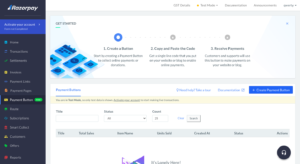
- Choose the Button template from the options available. You can click on Custom Button to create your own template
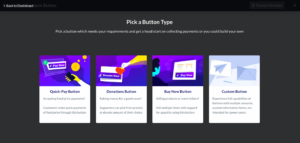
- Fill in the Button Details and Customer Details as per your discretion
- Review the details entered and create your button
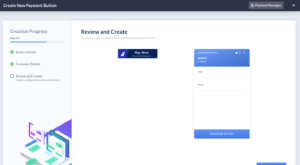
- Click on the ‘Payment Receipts’ option if you want to send automated or 80G receipts to your customers.
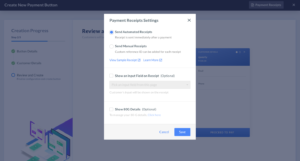
- Now that you have made the Payment Button, let’s see how to add Razorpay payment button plugin on WordPress.
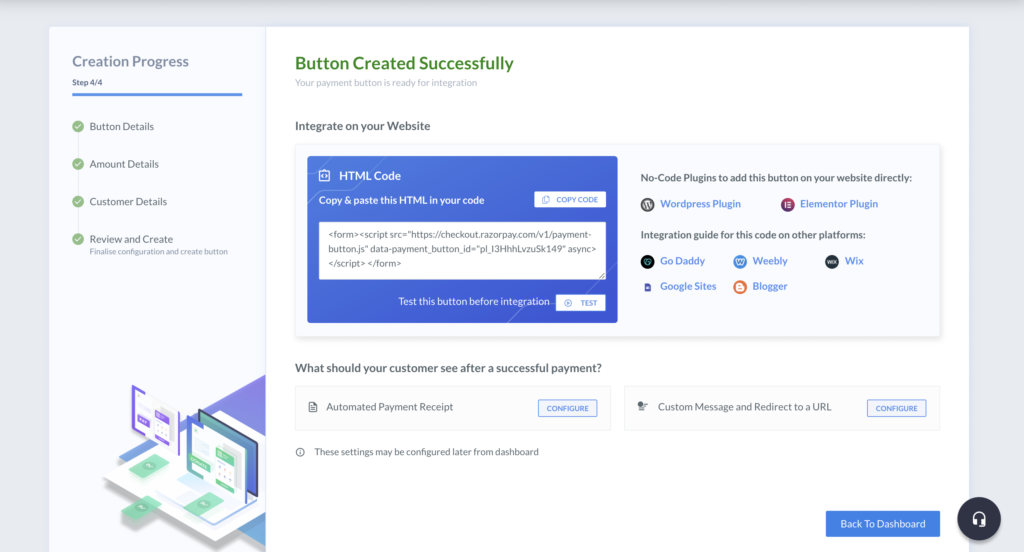
You can either add the plugin directly from your WordPress account or download it as a.zip file and upload it to your WordPress admin dashboard, download the WordPress plugin as a .zip file, or Elementor plugin as a .zip file and upload it to your WordPress admin dashboard.
Install Razorpay Payment Button Plugin within WordPress:
- Go to your WordPress website admin dashboard
- Go to Plugins > Add New in the left sidebar menu.
- Search for the Razorpay Payment Button for WordPress plugin (For WordPress site page), Razorpay Payment Button for Elementor (For an Elementor page)
- In the upper right, click Install Now
- Click Activate Plugin
Sync WordPress and Razorpay account:
- On your Razorpay Dashboard
Settings → API Keys → Generate/Copy your saved API Keys and Key ID
- On your WordPress Admin Dashboard
Razorpay Payment Button → Settings → Add API Secret Keys and details
That’s it! You can start accepting payments after this small exercise. For tracking and monitoring your Payment Button transactions, you can always refer to the Razorpay Dashboard.
Also Read: Step-by-step guide to add Razorpay Payment Button on WordPress & Elementor website
Get your visitors pressing the button today!
If you own a WordPress blog and are looking for an easy way to monetize it, then Razorpay Payment Buttons can help you in your endeavor. Show the world your content and talent, start an online business, and manage all your transactions with the Razorpay Payment Buttons integration on WordPress.

